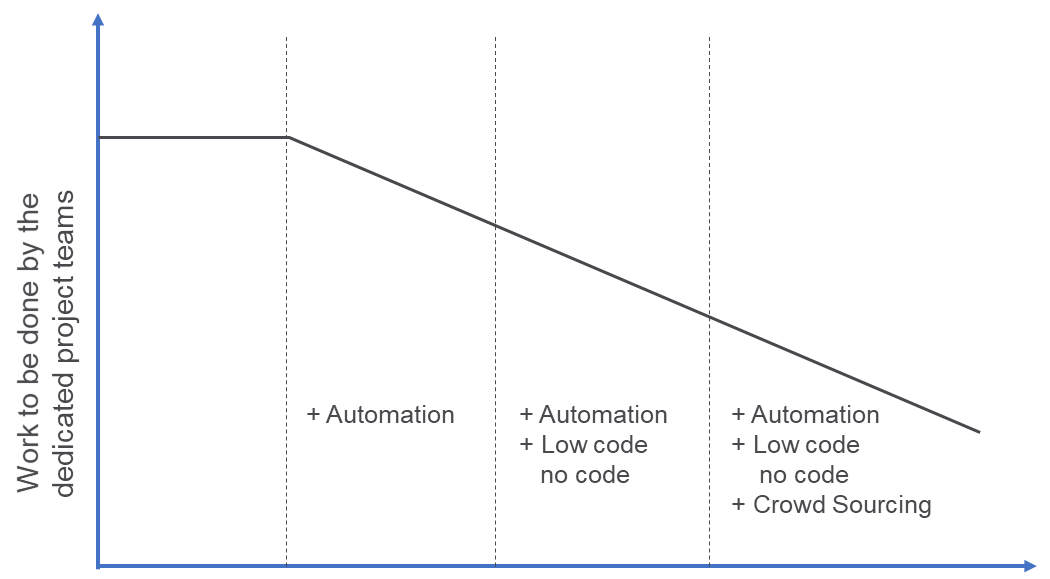These are times where organizations that adapt quickly and efficiently to digital transformation survive while others simply fall by the wayside. It is not the big eating the small anymore but the fast eating the slow. This is Enterprise Darwinism, in which siloed and traditional enterprises are evolving to become adaptive and digital.
To keep pace with market expectations and meet ever-changing customer demands, it is imperative not to keep the engineering capabilities only with project teams but to explore ways of enabling business users and the larger community for faster agile adaptive software rollout. In other words, democratization of engineering is the need of the hour.
This democratization of software engineering in project execution has some of these arms – Automation, Low code-No code, and crowdsourcing.
Automation
An enterprise’s vision of democratization will never become a reality without the automation of relevant business processes and elements of their customer journey. Tasks are to be democratized by identifying and defining those that are to be performed by bots, leaving the activity of decision-making with the people. Automation breaks barriers and provides entry for those who do not have the knowhow to complete a task. It is enough to know why and what needs to be done to complete the task. Alongside all repeated activities, which are routine in nature, rule-based activities that involve structural data should be automated to improve efficiency and optimize business operations.
Low Code No Code (LCNC)
LCNC platforms, also referred to as Citizen Development platforms, are often used by business users and administrators to build applications all by themselves, rather than waiting on IT teams to deliver. These users just need to know the related business processes and workflows to build the applications. LCNC platforms are GUI-based, where application components will be available in a drag-and-drop model. Users need to connect those components, build the applications and test them. Another extended usage is to allow the end user, consumers, and partners to key-in data into self-help portals to build business processes.
Crowdsourcing
Business processes and applications, which cannot be automated and need more customization and contextualization, should be crowdsourced to get coherent functionality implemented. In the digital era, enterprises want to market the innovative features and capabilities of their products and services faster to have an edge. These innovations would require the use of emerging technologies and enterprises might be constrained with skill availability for the same. This is where crowdsourcing allows enterprises to tap competent communities and execute parallel iterations or sprints thereby scaling up delivery with speed. Also, crowdsourcing gains more prominence as the software workforce millennials are increasingly gravitating toward the gig economy.
Organizations will look for automation, citizen development and crowdsourcing to get a major chunk of the work done (refer Figure 1). This would thus require smaller dedicated project teams essentially to integrate all the pieces together and become a customer-interacting team to exhibit accountability to the customer. However, project managers have to learn this new way of execution, as management parameters (scope, schedule, cost and quality) will continue to be the cornerstone of project success.

Figure 1: Cut down in the work done by the project team through automation, low code no code and crowd sourcing
Industry :

Neeraja Adusupalli
Practice manager, Enterprise Business Integration
Neeraja Adusupalli has over 20 years of IT experience delivering large digital transformation and modernization programs in the integration space. She is presently working as a Delivery Head in Wipro. She has managed large accounts from Order to Invoice and adopted next generation delivery models to drive efficiency, employee satisfaction and customer delight.